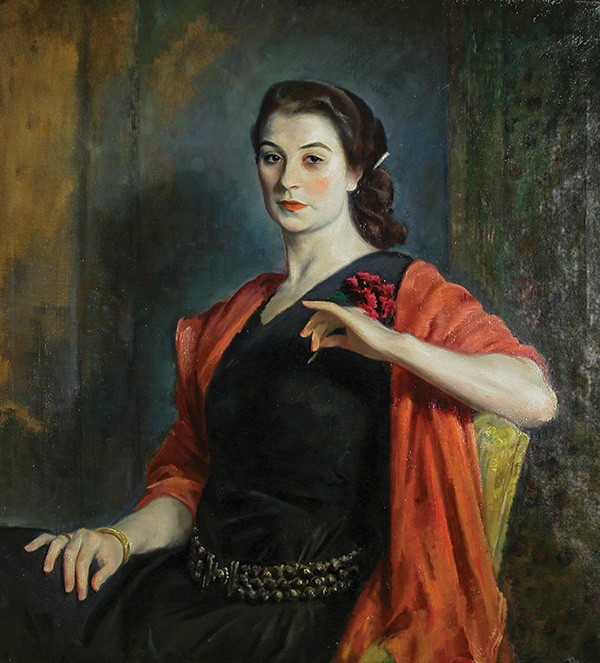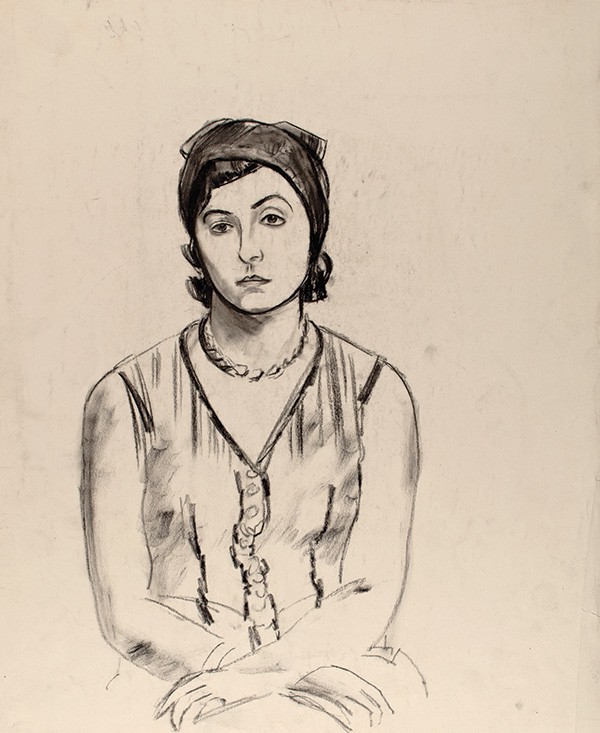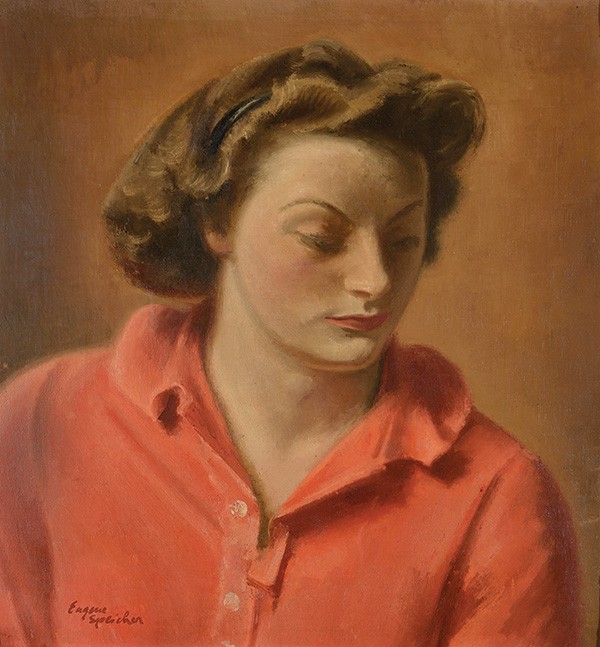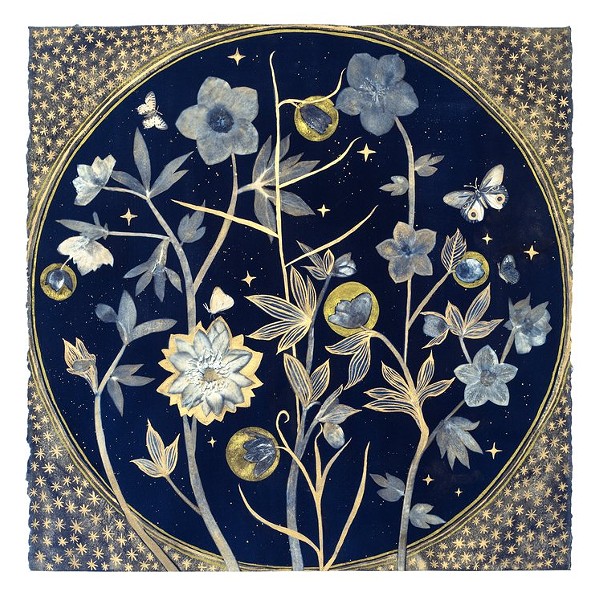
"He was such a big deal then; it's really amazing how he's fallen out of the canon," remarks Valerie Leeds, curator of "Along His Own Lines: A Retrospective of New York Realist Eugene Speicher" at the Dorsky Museum. Speicher was born in Buffalo in 1883, but moved to New York City to study at the Art Students League. His first formal recognition, the Kelly Prize, was awarded for a portrait of fellow student Georgia O'Keeffe in 1908. (At that time her name was Patsy.) In the painting, O'Keeffe looks like a dreamy young schoolmistress in a black frock and matching sash.
Portraiture became the young artist's specialty. He was constantly sought after for commissions, and his art shows were packed. Speicher's solo exhibition at the Rehn Gallery in 1934 drew more visitors than Edward Hopper's recent retrospective. In 1936 Esquire called him "America's most important living painter." Yet today, 52 years after his death, Speicher is essentially unknown. Major museums have deaccessioned his work, or never display it.
Enter independent curator and "Americanist" Leeds. Ever since she received her doctorate from CUNY in 2000, she has dreamed of staging a Speicher retrospective, to introduce a new generation to his work.
So how do the paintings look today? The eyes of American women were changing in the 1920s, and Speicher captured this evolution. A new boldness was emerging, tempered by women's fear that they were losing their "femininity." Babette, a portrait from 1931, shows a young woman with a muscular torso in an open red shirt. She has a beauty parlor hairdo that's gone slightly ragged, and gazes downward with troubled eyes. We see only her head and shoulders, which have the solemnity of ancient Greek sculpture.
The architecture of women's clothing can approach the absurd. In Portrait of a Lady with Striped Blouse the flaring blue-and-red-striped shoulders of the blouse match the upswept brunette hair, creating almost a sense of a person flying. Fira Barchak is a woman with a modernist metallic necklace, a bandanna on her head, ballet slippers, and a ukulele!
Katharine Cornell as Candida is the best piece in the show. It's almost life-size, and Cornell's theatrical presence dominates the room—at once commanding and seductive. The red of her gown is sumptuous, and so is the green of the chair beside her.
Speicher was a slow, methodical painter. The subjects of his portraits complained that he asked them to return again and again. Normally, when you step up close to a painting, you see the brushstrokes. Peering closely at Girl in a Coral Necklace (Joyce), I felt like I was about to touch a woman's face—as if Joyce herself were trapped inside the painting. Speicher practiced an art-as-alchemy.
Speicher's drawings show his mind at work, seizing on a yearning look in a subject's eye, a confiding tilt of the head. The sketches are freer, more spontaneous, than the canvases—and they remove Speicher's anxiety about color.
Speicher—whose nickname was "Spike"—lived most of the year in Woodstock, and retreated more and more into rural life over time. Eventually, he turned down portrait commissions, declaring that "they are as inspiring as a piece of gaspipe." Instead, he painted still lifes of flowers from his garden, and local friends. His house still stands on Bellows Lane, named after his more famous contemporary George Bellows.
"Along His Own Lives: A Retrospective of New York Realist Eugene Speicher" will appear at the Samuel Dorsky Museum of Art at SUNY New Paltz until July 13. (845) 257-3844; Newpaltz.edu/museum.



















